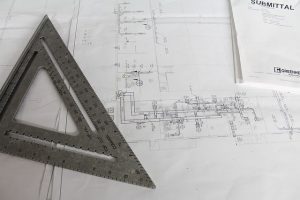What is reverse engineering
Reverse engineering, also known as back engineering, is a software analysis process that aims to obtain detailed information about given software’s structure and functioning. Knowledge in the field of reverse engineering can be used to obtain inaccessible information about the software or its modification, such as recovery of source code, virus analysis, gaming locations, analysis of encrypted network communication protocols, analysis of structures and data of compiled applications. Reverse engineering is often used to achieve certain functionality, bypassing the consequences that result from copyrights and patents. It is also used by the military to use technologies worked by other states.
Possible applications of reverse engineering
 Reverse engineering is frequently applied in our everyday life. It is used, for example, in the analysis of malicious software, in anti-virus laboratories, interface design, reverse engineering is also used to identify protocols of cooperation between systems. Reverse engineering also serves to: improve the quality of the document (obtain the required data to supplement or understand the latest system), software upgrade (to evaluate the work that needs updating), product analysis (study of the product’s operation, its components, estimation and potential violations) . You can find more information on this website.
Reverse engineering is frequently applied in our everyday life. It is used, for example, in the analysis of malicious software, in anti-virus laboratories, interface design, reverse engineering is also used to identify protocols of cooperation between systems. Reverse engineering also serves to: improve the quality of the document (obtain the required data to supplement or understand the latest system), software upgrade (to evaluate the work that needs updating), product analysis (study of the product’s operation, its components, estimation and potential violations) . You can find more information on this website.
Reverse engineering, features
Reverse engineering is an important process which can improve machines’ lifespan. Reverse engineering is particularly recommended when it’s important to modernise in order to gain new functionalities or the main goal is to eliminate given part’s faults.
One of the disadvantages of reverse engineering is the geometric imperfection of physical models. The accuracy of the obtained model depends on the measurement accuracy of the system that performs the 3d scan.
Reverse engineering, processes
There are many ways to use reverse engineering. The first one consists in changing the geometry of a specific virtual object, which can be modified in any way. The second approach is to obtain information on the geometry of the maintained object, which allows you to assess the type and size of the resulting errors. The repeated scanning process gives you the opportunity to evaluate the quality of the product. Therefore, reverse engineering has many features that you should become familiar with.

